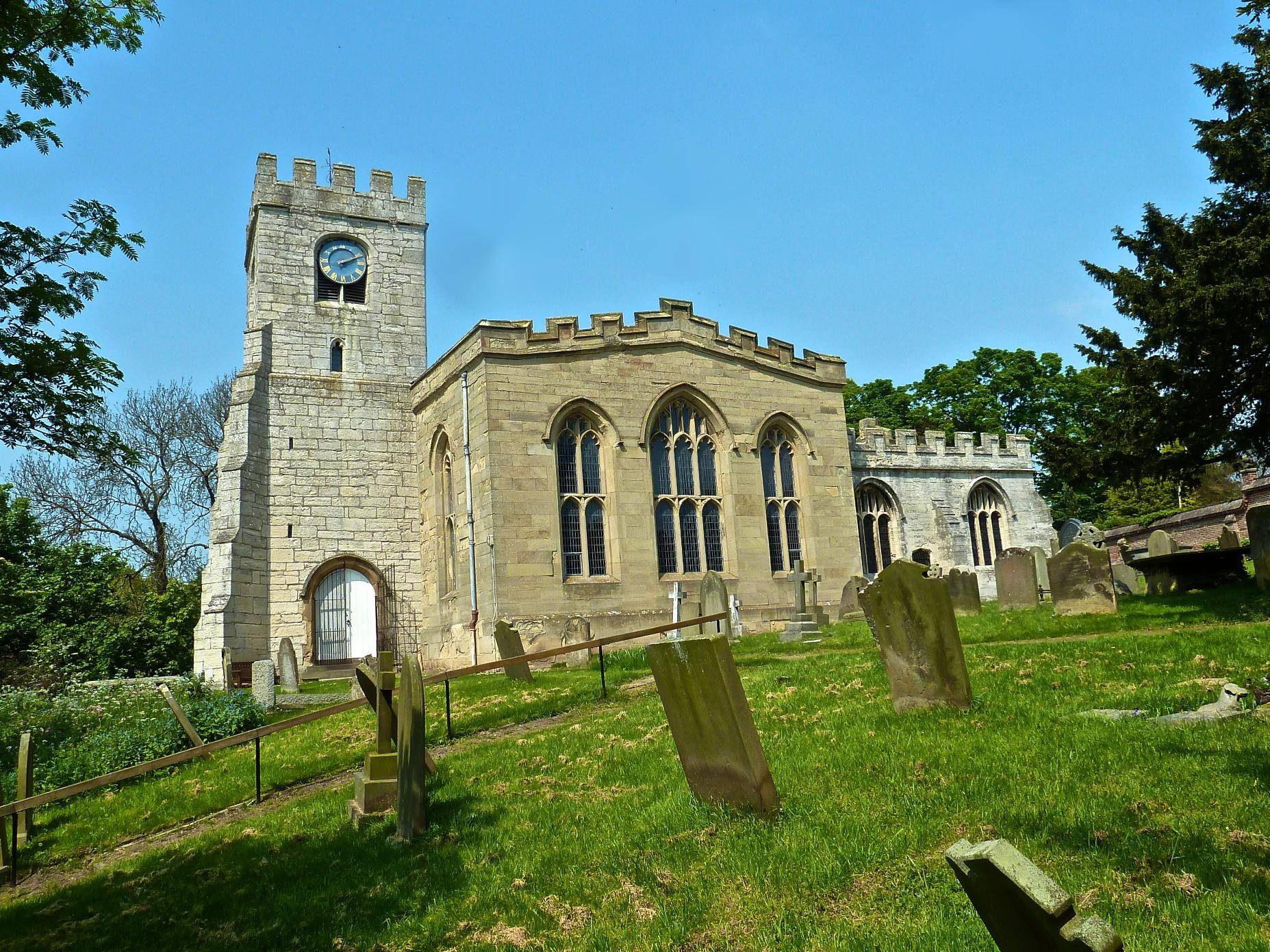St John the Evangelist
Dalton, Yorkshire
Our little village church was built in 1868 it is a delightful example of Butterfield's architecture.

The 15th century parish church of St Peter's Brafferton overlooks the River Swale where St Paulinus baptised 10,000 people at Christmas in AD 626.
Brafferton, Yorkshire
It is believed that an early church was established where Paulinus preached his sermon and where St Peter’s now stands. The Domesday Book (1086) mentions a church and priest in Brafferton, but Dom Roger de Mowbray in 1227 is the earliest named rector. In the middle ages the church was dedicated to St Augustine.
The earliest structure in the church dates from the 15th century, the chancel and the west tower. Chapels were added in the early 16th century by Ralph Neville of Thornton Bridge and commemorated by a Latin inscription which can still just be seen on the exterior south wall ‘orate pro animo Padulphi Nevill fundatoris hujus ecclesiae’, pray for the soul of Ralph Neville founder of this church. The layout of the medieval church was radically altered between 1826 and 1831.
James Piggott Pritchett, was the York architect who retained the medieval chancel, chapels and tower and reconstructed the nave in a neo-perpendicular style. He moved the entrance from the nave to the base of the tower and created a gallery over the south aisle. Church capacity was nearly doubled to 641. Today we inherit a light and airy church with a Georgian feel which unusually is broader than it is long. This radical layout was re-ordered between 1875-1878. The organ was installed in 1875 and a stone pulpit replaced the previous three decker pulpit in 1876. The box pews and the gallery were removed and replaced by the current pews facing the altar in 1878. The last addition was the choir vestry in 1894, but internally the south chapel was enclosed in glass in 1981 to enable small services to be held.
The east window of the church commemorates Queen Victoria’s Golden Jubilee in 1887 and the two windows in the south wall of the chapel are by Charles Eamer Kempe, a well known stained glass artist. The west window is by Charles E Steel and commemorates those from the parish who fell in World War I.

Dalton, Yorkshire
Our little village church was built in 1868 it is a delightful example of Butterfield's architecture.
Roecliffe, Yorkshire
Appealingly simple.
Skelton cum Newby, Yorkshire
A church built with unpaid ransom money.